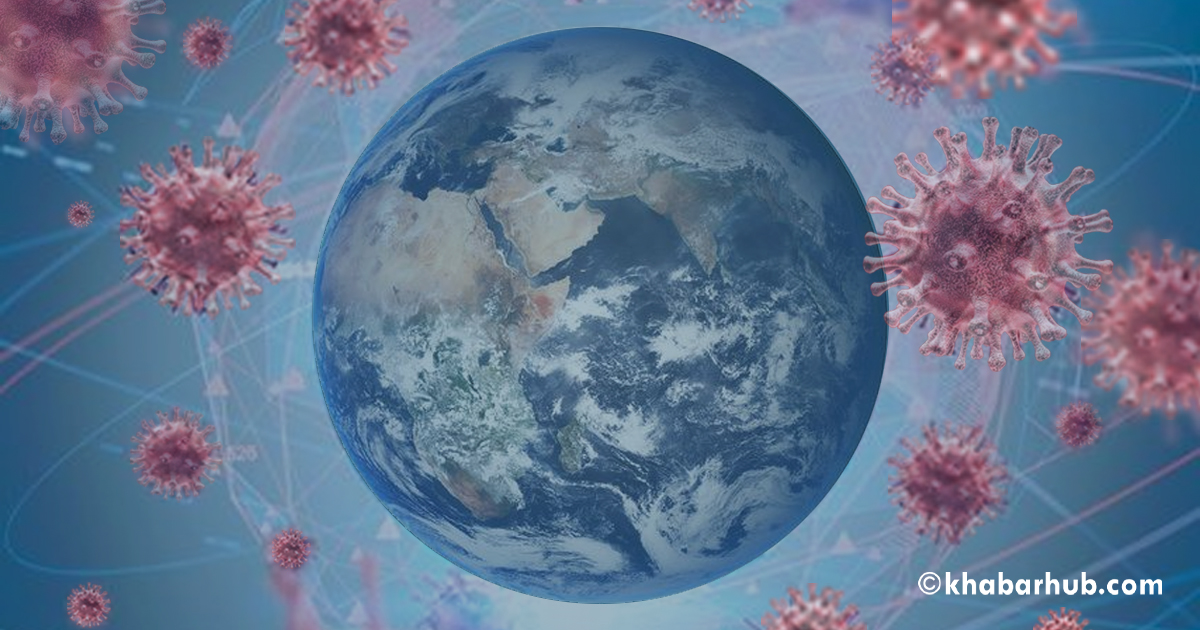In the last few months, the internet has been flaring up with facts, articles, and images apropos to COVID-19.
Many of those articles highlight the feel-good stories about earth healing and rejuvenating in the face of the current crisis.
The global COVID-19 pandemic has caused a sharp decline in the carbon emissions, garnered by the massive shutdown of factories, reduced use of public and personal means of transport and economic engagements leading to the extreme reduction in the consumption of the non-renewable energy, such as fossil fuel.
A month back, while China alone had projected a 25 percent plunge in carbon emissions; Italy plummeted by 10 percent with analogous cases in other countries.
Correspondingly, the recent NASA satellite image shows a steep drop in Nitrogen Dioxide instigated by the rapid and aggressive response to COVID-19, stirring hopes of many activists for similar radical actions on climate change.
Despite the clean air to breathe and animals running free in a ‘human-locked’ world, there are many honest reasons to scrutinize its sustainability.
The Head of the UN Environment Program (UNEP), Inger Anderson recently has warned against perceiving the crisis as the boon for the environment.
Experts such as Ian Colbeck, Professor of Environmental Science at the University of Essex suggests, the reductions as such may not signal good news for the environment permanently, as the decline of the emissions may only be momentary. Hence, the current climate benefits from the COVID-19 crisis are expected to be brief and trifling.
A Mistaken Climate Moral?
The pandemic, like the oil shocks of the 1970s and the global financial crisis of 2008 has led the global oil demand to shrink by more than 10 million barrels per day.
This may come as a break in the clouds, however; it doesn’t guarantee the persistence of low emissions in the post-pandemic situation. The demand for oil will, most likely, if not, certainly ramp back up, and so will the industries and carbon emissions.
Similarly, the phenomenon exposes the harsh reality about how it takes situations like the Great Recession or COVID-19 when it comes to curbing the emissions. The current falling demand for oil and the ongoing Russia-Saudi Arabia Oil price war has also triggered a major fall in the price of oil and is expected to result in the increased and inefficient consumption once the crisis is over.
China, in recent times, has indicated that it plans to ease its environmental supervision of companies to fuel its economy as a comeback to COVID-19 shutdowns, alluding that the 25 percent cut in carbon emissions in no time might fade away.
The pandemic could also slow the transferal to clean energy as China has a greater share of producing the world’s solar panels, wind turbines, batteries, etc., signaling a slowdown in the clean energy transition which is vital for controlling the climate crisis.
Subsequently, in Europe, the pandemic has spawned huge economic shock leading to sluggish international negotiations to fight climate change. The Prime Minister of the Czech Republic, Andrej Babiš recently made a statement suggesting, Europe should be stepping aside from the European Green Deal given the current situation.
According to Thorfinn Stainforth, a policy analyst at the Institute for European Environmental Policy (IEEP), “The rise in the public deficit and economic challenges are likely to reduce funding and investments in climate change mitigation”.
In the same way, the next round of international climate negotiations meeting COP26 in Scotland also has been delayed until 2021. The US, in like manner, may endorse hasty rehabilitation packages aiming to ramp up the economy to pre-pandemic levels.
In this milieu, it is also imperative to consider the five years of the recuperating period for levels of green investment in the post-2008 financial crisis.
Furthermore, there are, to some degree, parallels that can be drawn among the current COVID-19 pandemic and the climate crisis as they share common roots. A recently published position paper by the Italian Society of Environmental Medicine (SIMA), suggests a direct and dangerous liaison between the number of COVID-19 cases and the levels of PM10 pollution across territories.
The study reports a solid scientific consensus around the link between the incidence of viral infections and concentrations of atmospheric particulates.
The wakeup call; dreadful echoes for climate crisis
In the current scenario, the process of flattening the curve might seem to be helping the earth to heal. Yet, the pandemic is a distressing reality check when it comes to the climate crisis.
The actions of some of the countries make it apparent than ever on how humans never take much action until the situation gets completely out of hand and are reluctant to take economic losses even in the face of any global threat, of course; the same categories who are in persistent climate denialism.
While the social media and the news portal seem to be on top of the game, consistently covering every detail of the pandemic, the environmental problem such as air pollution, which has been estimated to cause 7 million premature deaths every year (by World Health Organisation) receives much lesser attention.
Part of the reason for the stark difference between the responses to these two crises maybe because the pandemic is much more direct and so is our action against it, while the multi-decade problem like climate change is indirect and will build as a catastrophic threat over decades.
Moreover, it’s worth mentioning, once the crisis is over, the world will revert to their same state as before, emissions are very much likely to go back up to pre-crisis levels, or even steadily increase from there. Because the current pandemic is expected to eventually pass within a relatively short time frame, most are willing to take immediate action.
The same, unfortunately, cannot be said when it comes to climate change. The structural deviations are hard to derive; nevertheless, it is precisely what long term crisis like climate change requires. This involves permanently altering the way of doing things, the portion of the reason as to why people, in general, are a lot more hesitant to take immediate action.
The clean air, satellite observations and some joyous animal stories in the social media, although might have somewhat eased the shock, but is not to be mistaken as a climate moral. In short, COVID-19 comes at a high price which shows us that the rapid emissions reductions are not pie in the sky but they can come about.
Consequently, the COVID-19 crisis reveals that governments can and should use solid methods if they want to induce changes in individual and collective behaviors. The pandemic has further helped to discover the capacity of citizens and policy-makers to respond to a crisis and can be applied to tackle climate change as both are deeply linked.
The world is increasingly at the risk of pandemics and fighting them without addressing the actual cause would be wrong-headed.
With millions of dollars being spent every year and the number of agreements and regulations being set up by policymakers; climate crisis still remains a major problem and possibly a reason behind epidemics that emerges every now and then.
An important lesson one can derive from the pandemic is that climate change needs to be perceived as an immediate crisis, which it is.
The virus on the comforting prospect has helped us realize better options and approaches to create policy-level actions and address the loose ends for the climate crisis, as the director of Energy, Security and climate change (Council of Foreign Relation) Amy Jaffe puts it, “Suppose you were a policymaker, and you were thinking about what you would do to lower emissions, you just got pretty good instruction.”
(The writer works as Research Associate at NIICE)
(Nepal Institute for International Cooperation and Engagement (NIICE), Nepal’s independent think tank, and Khabarhub — Nepal’s popular news portal — have joined hands to disseminate NIICE research articles from Nepal)









Comment